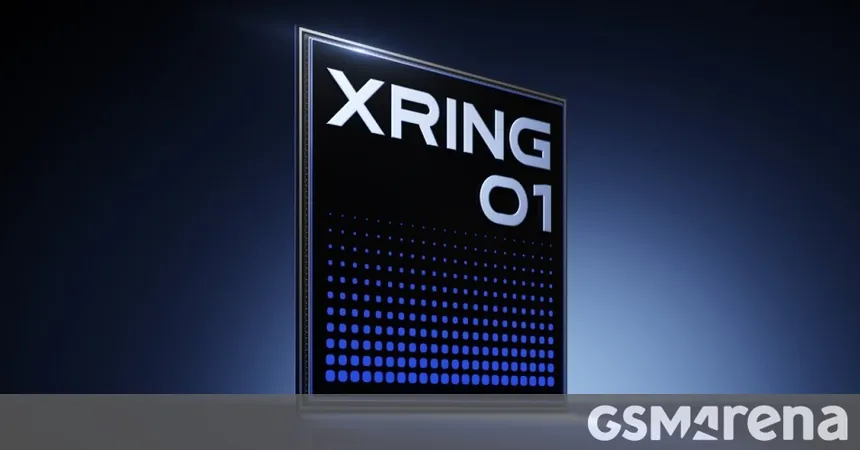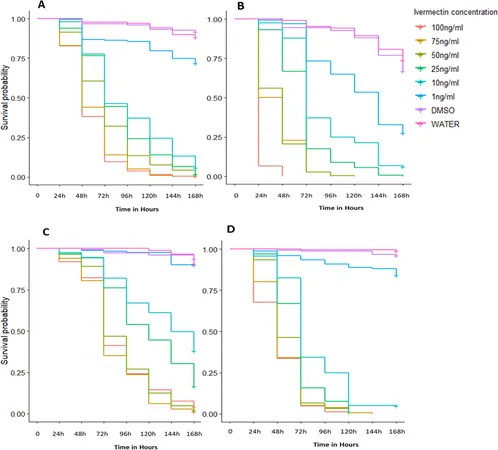
Unveiling Xiaomi's Revolutionary Xring O1: The Game-Changer in Mobile Chipsets
2025-05-24
Author: Rajesh
Introducing the Xring O1
This week, Xiaomi has made waves in the tech world with the launch of its flagship in-house chipset, the Xring O1, poised to power the latest Xiaomi 15S Pro smartphones and the Xiaomi Pad 7 Ultra. While some skeptics question just how much Xiaomi innovated—given that the O1 incorporates standard ARM CPU and GPU cores—an exhaustive analysis by Geekerwan reveals this is no ordinary chip.
Custom Design Meets Cutting-Edge Technology
Manufactured on the advanced TSMC N3E node—similar to MediaTek’s Dimensity 9400—the Xring O1 boasts a significantly tailored architecture. Unlike standard configurations, the O1 impressively features dual Cortex-X925 prime cores, two distinct Cortex-A725 variants, and an added safety layer of two A520 cores.
What sets the Cortex-A725 cores apart? They are divided into two clusters: four high-performance cores and two efficiency-optimized cores. The die shot showcased in the revealing video shows that the efficiency-oriented A725 cores, despite being slightly larger, are clocked lower (1.9GHz compared to 3.4GHz). This smart design allows the chipset to dynamically switch between cores based on performance needs while slashing power consumption.
Performance Brilliance
The end result? The Xring O1 outshines the Dimensity 9400 in both CPU performance and energy efficiency—though it’s just shy of matching Qualcomm’s Snapdragon 8 Elite. Impressively compact, measuring only 109mm² (akin to Apple’s A18 Pro), the O1 stands out with its external modem, unlike the integrated modems found in competitors like Dimensity and Snapdragon.
Revolutionary Memory Configuration
Xiaomi’s innovative approach to on-chip memory is noteworthy. Rather than relying on a multi-megabyte System Level Cache (SLC)—the standard in modern chipsets—the O1 is equipped with a substantial 16MB of L3 shared among all 10 cores. Each Cortex-X925 core enjoys 2MB of L2 cache, while each A725 core gets 1MB. Additionally, there’s a whopping 4MB cache for the GPU and a massive 10MB for the NPU, marking a significant leap in processing capabilities.
A Custom NPU and ISP
One key element of the Xring O1 is its custom 6-core NPU, which takes up considerable chip space, comparable to the CPU. Furthermore, Xiaomi has integrated its fourth-generation ISP for improved efficiency compared to prior generations that required separate chips.
The GPU: Room for Improvement
However, the GPU, a 16-core Immortalis-G925, raises some eyebrows. While the team did a commendable job with the CPU, the GPU's size—larger than the Dimensity 9400’s 12-core version—could be a double-edged sword. The lack of SLC may impact GPU efficiency, causing it to draw more power at peak performance.
Challenges Ahead: External Modems and Future Integration
Moreover, the external MediaTek T800 modem raises power consumption concerns, adversely affecting the Xiaomi 15S Pro’s standby time. This is precisely why competitors like Apple have invested heavily in integrated 5G solutions, which they debuted with the iPhone 16e. Xiaomi is taking steps in the right direction, having recently introduced its 4G modem through the Xring T1 for the revamped Xiaomi Watch S4.
Though 5G development poses greater challenges, successful integration would mark a critical advancement in Xiaomi's journey towards vertical integration.
Final Thoughts
For an in-depth look at how Xiaomi's Xring O1 is crafted and its impressive performance, don’t miss the detailed video analysis!

 Brasil (PT)
Brasil (PT)
 Canada (EN)
Canada (EN)
 Chile (ES)
Chile (ES)
 Česko (CS)
Česko (CS)
 대한민국 (KO)
대한민국 (KO)
 España (ES)
España (ES)
 France (FR)
France (FR)
 Hong Kong (EN)
Hong Kong (EN)
 Italia (IT)
Italia (IT)
 日本 (JA)
日本 (JA)
 Magyarország (HU)
Magyarország (HU)
 Norge (NO)
Norge (NO)
 Polska (PL)
Polska (PL)
 Schweiz (DE)
Schweiz (DE)
 Singapore (EN)
Singapore (EN)
 Sverige (SV)
Sverige (SV)
 Suomi (FI)
Suomi (FI)
 Türkiye (TR)
Türkiye (TR)
 الإمارات العربية المتحدة (AR)
الإمارات العربية المتحدة (AR)